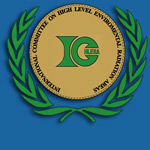Orateur
Description
The TIRAMISU collaboration within the ZATU in France focuses on the analysis of the response to natural radioactivity of microorganisms living in mineral springs.
For the current study, water and sediment samples from 27 mineral springs in the volcanic Auvergne region (Massif Central, France) have been collected and analyzed for their radiological and microbial content. High levels of 222Rn activities in water (up to 4000 Bq/L) and concentrations of 226Ra (up to 50 Bq/gr) in the sediments were measured by γ -spectroscopy, while the characterization was supplemented with α-spectrometry and ICP-MS-HR analyses. Among the microorganisms present, diatoms (microalgae), widely used as environmental indicators of water quality, have shown to display an exceptional abundance of teratogenic forms in the most radioactive springs studied [1].
A first estimation of the radiological risk to freshwater biota using the ERICA tool [2] showed that most of the sampled mineral springs are highly above the risk threshold of 10 μGy/h due to the large concentrations of radium in the sediments.
The radiological data from the analysis of the water and sediment samples are used as inputs to Monte Carlo simulations to evaluate the dose received by the diatoms and the potential radio-induced damages. Microdosimetric (GATE) [3] and nanodosimetric (Geant4-DNA) [4] approaches are coupled to model the surrounding environment, the diatom and the nucleus, in order to assess the damages on the diatom DNA. Results on radiation exposure and DNA Strand Breaks due to direct energy deposition will be discussed for different porosities and sediment compositions around the diatoms.
References
[1] F. Millan et al., Botany Letters, 2020, 167(1), 95-113
[2] J.E. Brown et al., J. Env. Rad., 2008, 99 (special volume on ERICA tool)
[3] D. Sarrut et al, Med.Phys., 2014, 41(6) :064301
[4] S. Incerti et al, Int. J. Model. Simul, Sci. Comput., 2010, 1, 157-158

